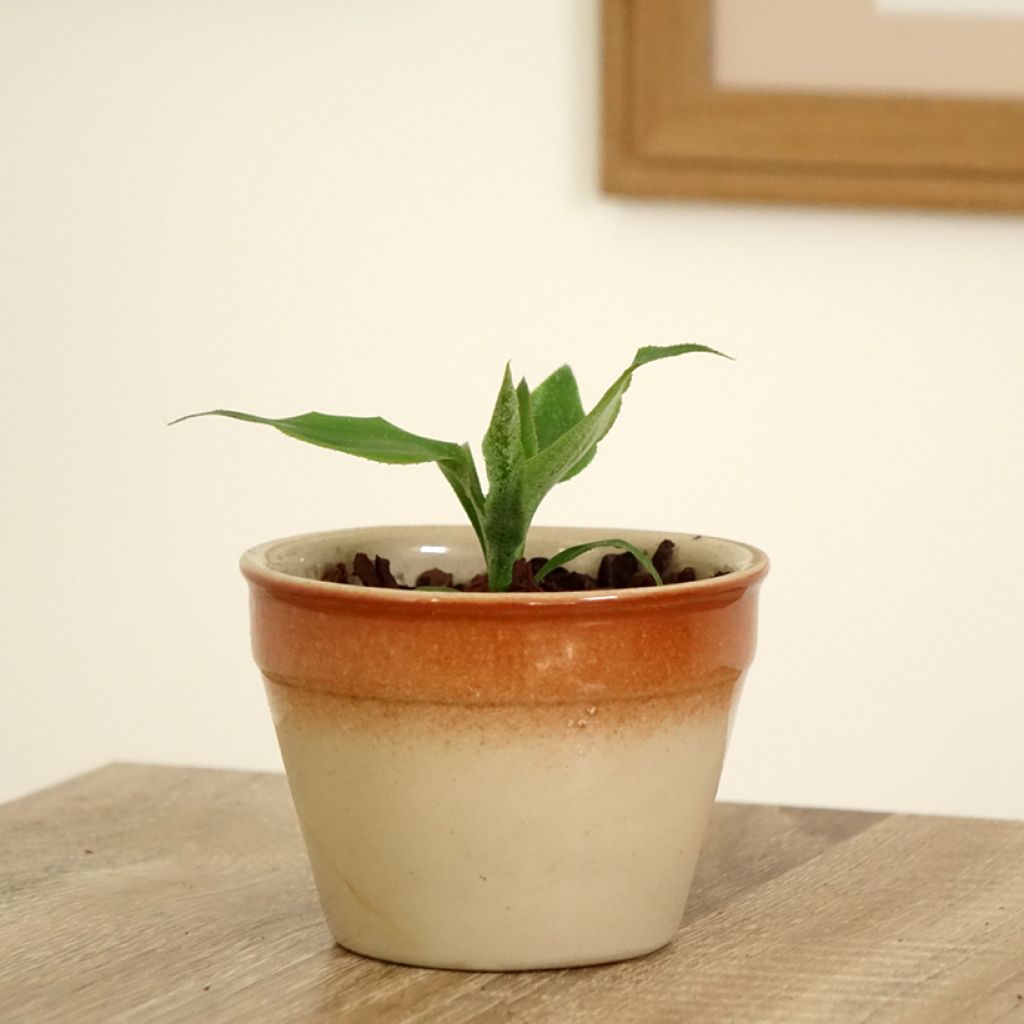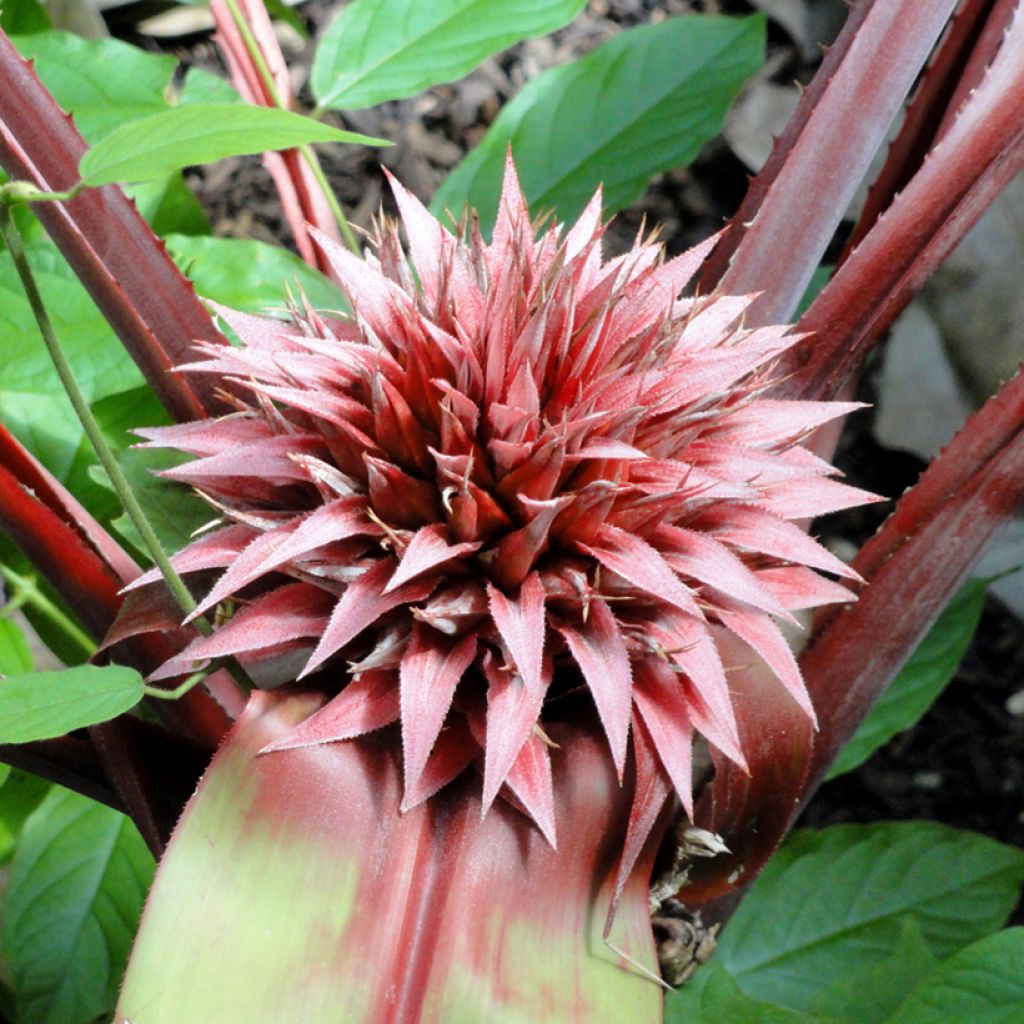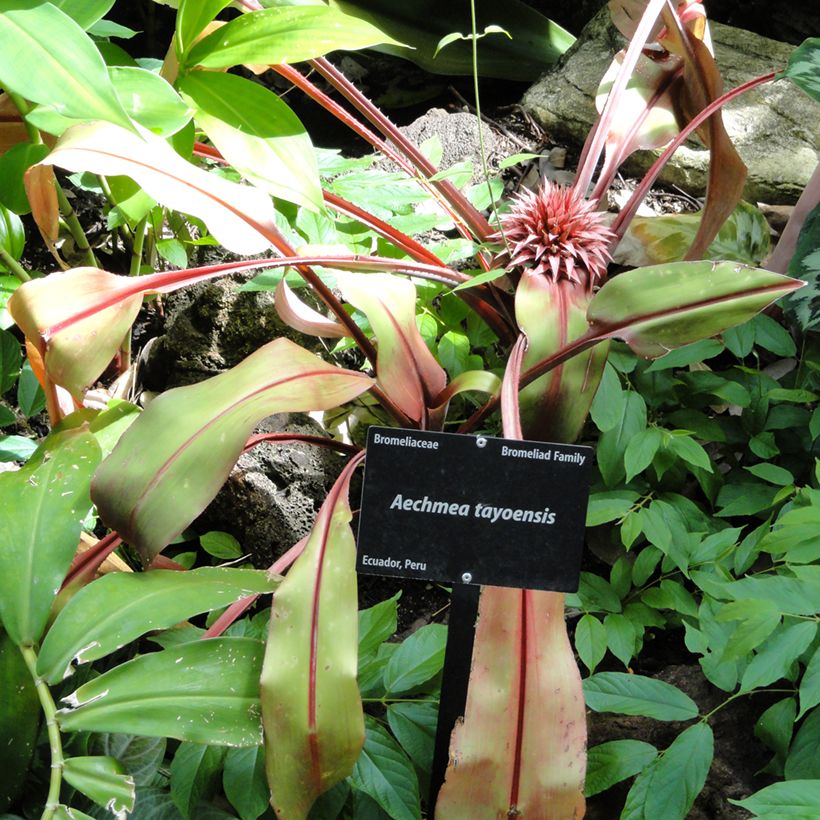

Aechmea tayoensis


Aechmea tayoensis
Aechmea tayoensis
Aechmea tayoensis
Special offer!
Receive a €20 voucher for any order over €90 (excluding delivery costs, credit notes, and plastic-free options)!
1- Add your favorite plants to your cart.
2- Once you have reached €90, confirm your order (you can even choose the delivery date!).
3- As soon as your order is shipped, you will receive an email containing your voucher code, valid for 3 months (90 days).
Your voucher is unique and can only be used once, for any order with a minimum value of €20, excluding delivery costs.
Can be combined with other current offers, non-divisible and non-refundable.
Home or relay delivery (depending on size and destination)
Schedule delivery date,
and select date in basket
This plant carries a 30 days recovery warranty
More information
We guarantee the quality of our plants for a full growing cycle, and will replace at our expense any plant that fails to recover under normal climatic and planting conditions.
Description
Aechmea tayoensis is a rare bromeliad, sought after by collectors of tropical houseplants. Unique and decorative, this Ecuadorian botanical species forms a dense rosette composed of long, rigid, and arched leaves with finely spiny edges. At the centre of the mature rosette, a spectacular inflorescence rises, made up of colourful bracts ranging from pink to orange, and small yellow flowers. The rosette dies after flowering, but not without producing one or more offsets to ensure its continuity.
Aechmea tayoensis is a perennial plant belonging to the Bromeliaceae family. It is also known by the botanical synonym Chevaliera tayoensis. Native to the humid tropical forests of Ecuador, this epiphytic species thrives mainly in humid tropical biotic regions. An epiphytic plant is one that grows on another plant, usually a tree, without being parasitic. It uses its host solely as a support to access light and air, drawing nutrients from ambient moisture, organic debris, and rain.
Aechmea tayoensis has a dense, funnel-shaped rosette habit, with broad, pendulous leaves. The petioles bearing the leaves are reddish and thorny, while the leaves are green in low light conditions; the surface develops lime green hues infused with coppery red under intense light. The growth of this plant is considered slow. It may take several years to reach its mature size and flower. At maturity, it reaches a height of 40 to 60 cm and a spread of 30 to 45 cm. The inflorescence emerges from the centre of the rosette, resembling a spiny, rose-red artichoke, with pointed bracts and yellow flowers.
Like most Bromeliads, Aechmea tayoensis is a semelparous plant. This means that the main rosette dies after flowering. However, it does not disappear without a trace: the plant typically produces offsets, also known as "suckers" or "lateral shoots", before or after flowering. These offsets, which develop at the base of the plant, can be separated once they have reached a sufficient size (traditionally one-third or half the size of the mother rosette). They allow the plant to regenerate and multiply. In cultivation, these offsets can be repotted individually to obtain new plants, ensuring the continuity of the collection.
Indoors, Aechmea tayoensis prefers bright, indirect light, high ambient humidity, and temperatures between 18 and 24 °C. If the air is too dry, mist its leaves regularly or use a humidifier. It is recommended to keep the substrate slightly moist while avoiding excess water. Like many bromeliads, this one needs its central rosette to be filled with a little clean, lime-free water. It dislikes temperatures below 12 °C.
Aechmea tayoensis can be showcased in a bright living room or conservatory as long as it is provided with adequate conditions. This variety fits into a contemporary, bohemian, or tropical-style interior. Place it on a pedestal or open shelf, near a window offering indirect light. It will also thrive alongside other tropical plants to create a chic jungle corner, while benefiting from the ambient humidity necessary for its growth. It forms a striking duo with the Philodendron ‘Birkin’, with its white-veined leaves. For a lush effect, add Calathea orbifolia, with its broad, silver-striped leaves.
Report an error about the product description
Aechmea tayoensis in pictures


Foliage
Plant habit
Flowering
Botanical data
Aechmea
tayoensis
Bromeliaceae
South America
Safety measures
Location
Location
Maintenance and care
Watering tips
Potting advice, substrates and fertilisers
Houseplant care
Disease and pest advice
Maintenance and care
This item has not been reviewed yet - be the first to leave a review about it.
Haven't found what you were looking for?
Hardiness is the lowest winter temperature a plant can endure without suffering serious damage or even dying. However, hardiness is affected by location (a sheltered area, such as a patio), protection (winter cover) and soil type (hardiness is improved by well-drained soil).

Photo Sharing Terms & Conditions
In order to encourage gardeners to interact and share their experiences, Promesse de fleurs offers various media enabling content to be uploaded onto its Site - in particular via the ‘Photo sharing’ module.
The User agrees to refrain from:
- Posting any content that is illegal, prejudicial, insulting, racist, inciteful to hatred, revisionist, contrary to public decency, that infringes on privacy or on the privacy rights of third parties, in particular the publicity rights of persons and goods, intellectual property rights, or the right to privacy.
- Submitting content on behalf of a third party;
- Impersonate the identity of a third party and/or publish any personal information about a third party;
In general, the User undertakes to refrain from any unethical behaviour.
All Content (in particular text, comments, files, images, photos, videos, creative works, etc.), which may be subject to property or intellectual property rights, image or other private rights, shall remain the property of the User, subject to the limited rights granted by the terms of the licence granted by Promesse de fleurs as stated below. Users are at liberty to publish or not to publish such Content on the Site, notably via the ‘Photo Sharing’ facility, and accept that this Content shall be made public and freely accessible, notably on the Internet.
Users further acknowledge, undertake to have ,and guarantee that they hold all necessary rights and permissions to publish such material on the Site, in particular with regard to the legislation in force pertaining to any privacy, property, intellectual property, image, or contractual rights, or rights of any other nature. By publishing such Content on the Site, Users acknowledge accepting full liability as publishers of the Content within the meaning of the law, and grant Promesse de fleurs, free of charge, an inclusive, worldwide licence for the said Content for the entire duration of its publication, including all reproduction, representation, up/downloading, displaying, performing, transmission, and storage rights.
Users also grant permission for their name to be linked to the Content and accept that this link may not always be made available.
By engaging in posting material, Users consent to their Content becoming automatically accessible on the Internet, in particular on other sites and/or blogs and/or web pages of the Promesse de fleurs site, including in particular social pages and the Promesse de fleurs catalogue.
Users may secure the removal of entrusted content free of charge by issuing a simple request via our contact form.
The flowering period indicated on our website applies to countries and regions located in USDA zone 8 (France, the United Kingdom, Ireland, the Netherlands, etc.)
It will vary according to where you live:
- In zones 9 to 10 (Italy, Spain, Greece, etc.), flowering will occur about 2 to 4 weeks earlier.
- In zones 6 to 7 (Germany, Poland, Slovenia, and lower mountainous regions), flowering will be delayed by 2 to 3 weeks.
- In zone 5 (Central Europe, Scandinavia), blooming will be delayed by 3 to 5 weeks.
In temperate climates, pruning of spring-flowering shrubs (forsythia, spireas, etc.) should be done just after flowering.
Pruning of summer-flowering shrubs (Indian Lilac, Perovskia, etc.) can be done in winter or spring.
In cold regions as well as with frost-sensitive plants, avoid pruning too early when severe frosts may still occur.
The planting period indicated on our website applies to countries and regions located in USDA zone 8 (France, United Kingdom, Ireland, Netherlands).
It will vary according to where you live:
- In Mediterranean zones (Marseille, Madrid, Milan, etc.), autumn and winter are the best planting periods.
- In continental zones (Strasbourg, Munich, Vienna, etc.), delay planting by 2 to 3 weeks in spring and bring it forward by 2 to 4 weeks in autumn.
- In mountainous regions (the Alps, Pyrenees, Carpathians, etc.), it is best to plant in late spring (May-June) or late summer (August-September).
The harvesting period indicated on our website applies to countries and regions in USDA zone 8 (France, England, Ireland, the Netherlands).
In colder areas (Scandinavia, Poland, Austria...) fruit and vegetable harvests are likely to be delayed by 3-4 weeks.
In warmer areas (Italy, Spain, Greece, etc.), harvesting will probably take place earlier, depending on weather conditions.
The sowing periods indicated on our website apply to countries and regions within USDA Zone 8 (France, UK, Ireland, Netherlands).
In colder areas (Scandinavia, Poland, Austria...), delay any outdoor sowing by 3-4 weeks, or sow under glass.
In warmer climes (Italy, Spain, Greece, etc.), bring outdoor sowing forward by a few weeks.





























